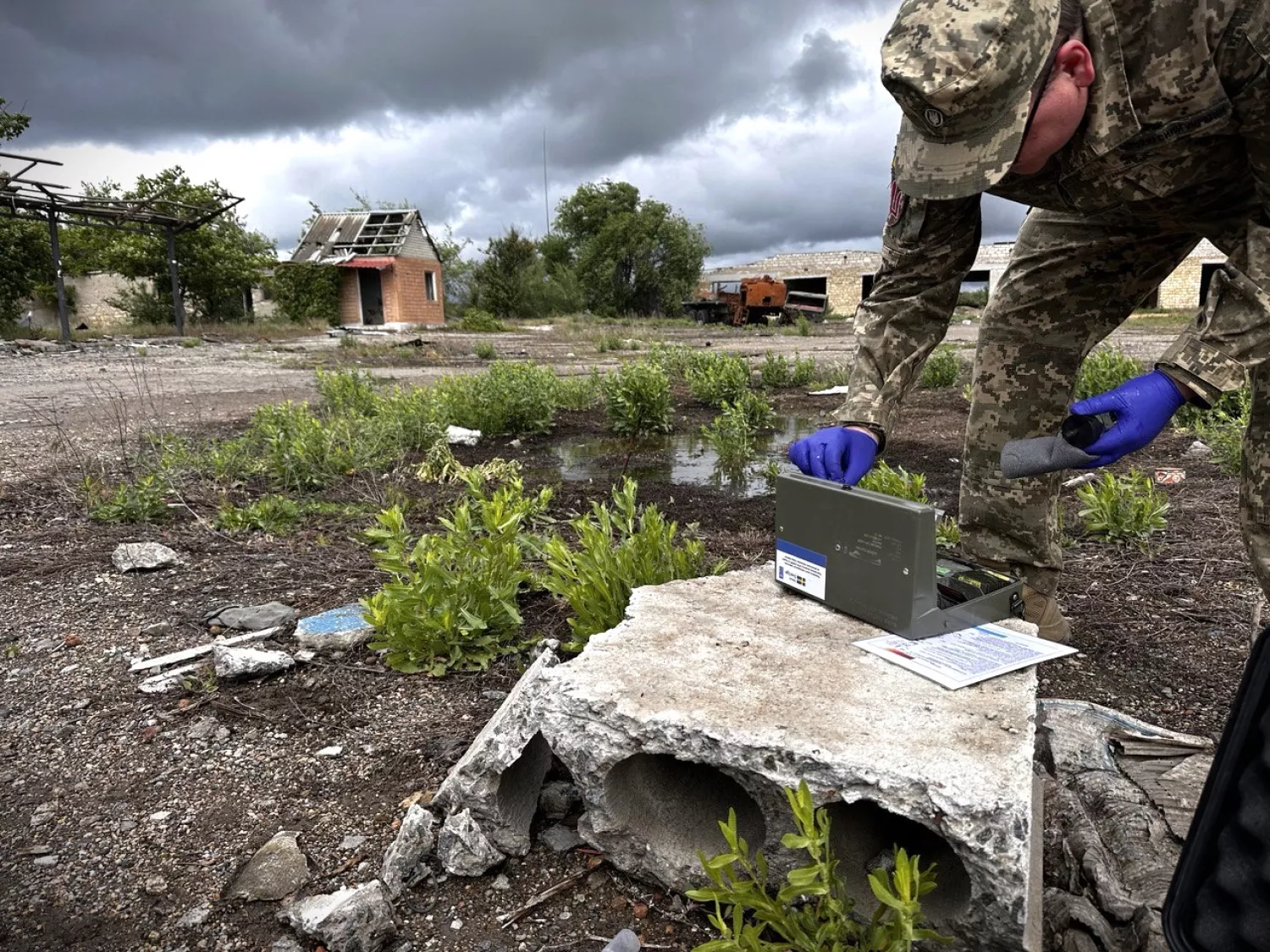Heavy metals, explosives, toxic chemicals: military ecologists study the soils of the de-occupied Mykolaiv region
- Svitlana Ivanchenko
-
•
-
21:42, 22 October, 2024
 An increased content of dangerous substances was found in the de-occupied territories of the region. Photo: press service of the Ministry of Defense of Ukraine
An increased content of dangerous substances was found in the de-occupied territories of the region. Photo: press service of the Ministry of Defense of UkraineIn the de-occupied territories of the Mykolaiv region, an increased content of heavy metals was found in the soil. In particular, arsenic, lead, copper, zinc, as well as remnants of explosives.
This is evidenced by the first results of research conducted by specialists of the Center of Excellence in Mine Action and Environmental Safety, the press service of the Ministry of Defense reports.
Experts noted that such indicators are the result of missile and artillery strikes by the Russian army on enterprises, warehouses with agrochemicals and fuel.
It is noted that areas near the city of Snihurivka and the village of Shevchenkove were surveyed, samples of soil, silt and water from the Inhulets River were taken. Military ecologists conducted a series of measurements with state-of-the-art devices.
For a more accurate analysis, the samples will be sent to the Ukrainian Laboratory of Quality and Safety of Agricultural Products.
The agency reported that such studies are being conducted at the request of the Mykolaiv RMA and will help restore the affected areas. In particular, return them to economic use and restore the environment.
We will remind that the amount of damage to the ecology of the Mykolaiv region since the beginning of the full-scale invasion of the Russian Federation into Ukraine amounted to more than 90 billion hryvnias.
Read also the article NikVesti .
Climate strategy of the Mykolaiv region
We will remind you that the experts of the European Union project APENA 3 are working on climate strategies of three pilot regions of Ukraine: Mykolaiv, Ivano-Frankivsk, and Lviv. These regions were chosen as pilot areas even before a full-scale Russian invasion. They are provided with international technical assistance for the preparation of regional strategies for adaptation to climate change. In particular, in August 2021, a working group was created at the Mykolaiv Regional State Administration to develop a strategy for adapting the region to climate change as part of the APENA 3 project.
Back in May 2023, they presented interim results from the assessment of the vulnerability of economic sectors to climate change using the example of the Mykolaiv region. At that time, it was said that changes in average annual temperatures in the region exceeded global indicators. This trend appears to have accelerated over the past 30 years, with more frequent and intense thunderstorms, downpours and squalls. At the same time, they added, Russian aggression has further increased the risk of fires in the steppe and other parts of the region.